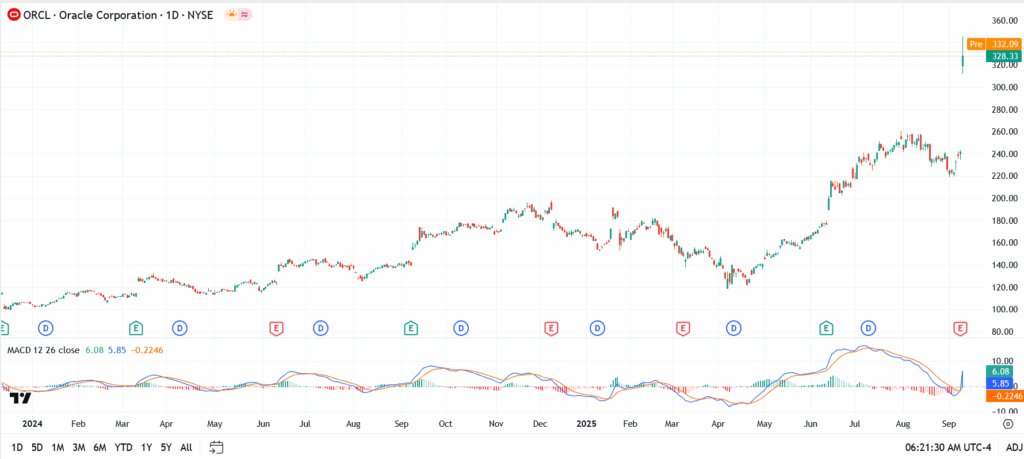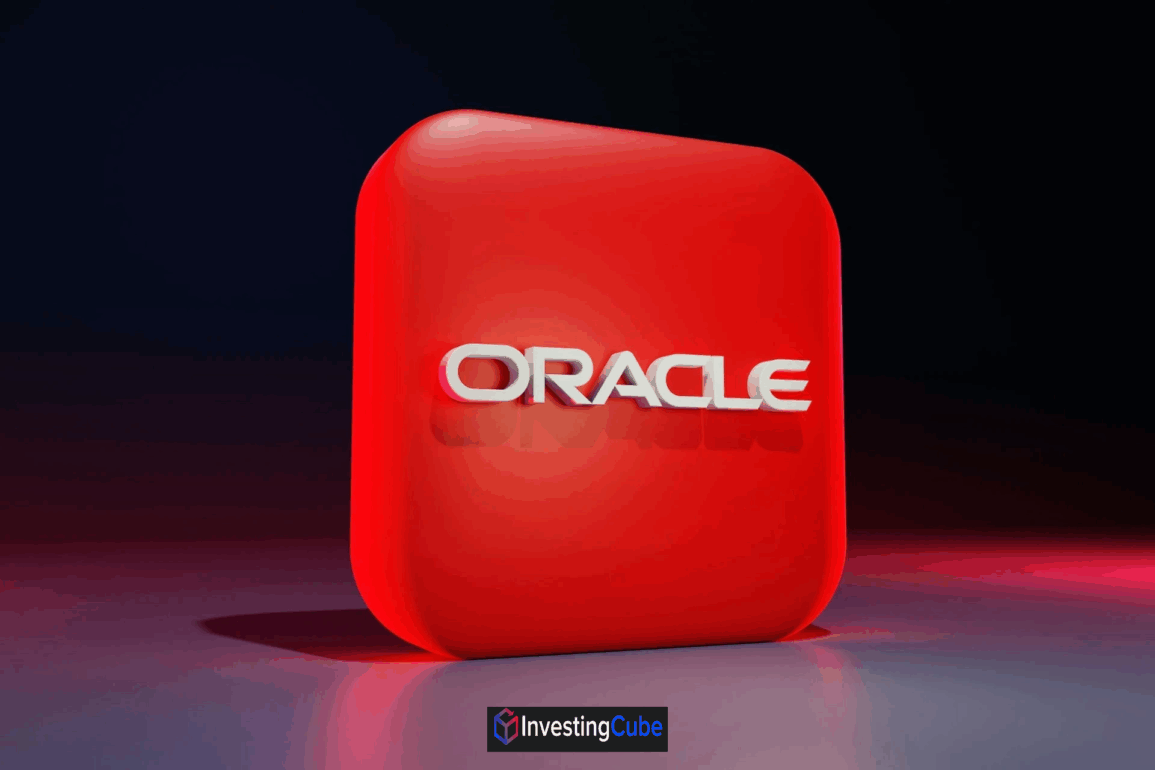- Oracle stock surged after a reported $300B OpenAI deal, fueling talk it could rival Nvidia as Wall Street re-rates its AI cloud business.
Oracle (ORCL) stunned Wall Street with a record-breaking rally, surging 43% to $332 in its best single session in nearly three decades. The move added over $200 billion in market value and catapulted founder Larry Ellison’s net worth past $400 billion, making him the richest person in the world ahead of Elon Musk.
The explosive rally followed reports that OpenAI has signed a $300 billion cloud deal with Oracle, the largest in history, locking in compute capacity for its expanding AI operations and instantly reshaping Oracle’s role in the AI infrastructure race.
Why Is Oracle Stock Exploding Higher?
The rally began late Tuesday after reports surfaced that OpenAI had committed to purchase $300 billion worth of compute power from Oracle over five years starting in 2027. The contract would rank among the largest ever in the cloud industry and instantly reposition Oracle from a legacy database giant into a top-tier AI infrastructure player.
OpenAI began gradually shifting workloads onto Oracle Cloud in mid-2024 to reduce its reliance on Microsoft’s Azure. That pivot accelerated in January with the launch of the $500 billion Stargate Project, a mega data center buildout backed by Oracle, OpenAI, and SoftBank. The reported contract cements Oracle’s role as a core supplier in OpenAI’s expansion and signals that the AI firm is locking in long-term compute supply to avoid GPU bottlenecks.
Wall Street reacted instantly, with traders re-rating Oracle as a high-growth cloud operator rather than a slow-moving legacy software name.
Oracle Chart Analysis Today
- Current price: $332.09
- Support: New support is now near $300, with firmer footing around $280 if profit-taking hits.
- Resistance: Price is at record highs, with psychological resistance near $350.

Trade entry points
Bullish case: A clean entry would be on a pullback to the $300–$305 support zone as dip-buyers step in.
Bearish case: If price fails to hold $300 and slides below $280, it could trigger profit-taking and unwind the rally.
Oracle vs Nvidia: The New AI Market Divide
Nvidia dominates the AI hardware layer, designing the high-performance GPUs that power model training and inference across data centers worldwide. Oracle, by contrast, operates at the infrastructure layer, providing the cloud platforms and data center capacity where those GPUs run.
Until now, Nvidia has captured most of the market’s AI enthusiasm, while Oracle was viewed as an underdog trying to catch up to the cloud incumbents. But if the reported $300 billion OpenAI contract is confirmed, Oracle could emerge as a direct rival for investor capital within the AI trade, a rare software-first company positioned to benefit from the same growth wave driving Nvidia.
Where Nvidia monetizes the chips themselves, Oracle monetizes the recurring compute hours they enable. That difference could matter: Nvidia’s revenue swings with chip cycles, while Oracle’s deal structure could deliver steadier, subscription-like growth. For the first time, Wall Street is treating them as two sides of the same AI infrastructure coin.
Oracle FAQs:
Not exactly, but it’s becoming part of the same trade. Nvidia dominates the hardware layer of AI with its GPUs, while Oracle is surging at the infrastructure layer, selling the cloud platforms that run those GPUs. If the reported $300 billion OpenAI contract holds, Oracle could start competing with Nvidia for AI-driven investor capital, offering steadier subscription-like revenue instead of cyclical chip sales.
It’s getting stretched. A 43% one-day jump pushed the stock into uncharted territory, with its valuation now pricing in flawless execution on future AI growth. If the OpenAI deal is confirmed, the premium could stick, but if it’s delayed or disputed, the multiple could compress fast. The margin for error has tightened dramatically.
Analysts expect Oracle’s cloud infrastructure revenue to grow more than 70% year over year, fueled by mega data center projects like the Stargate buildout. Its Remaining Performance Obligations (RPO) are also swelling, signaling massive locked-in demand from AI clients. That backlog gives Oracle unusually high revenue visibility for a software company, which is a major part of the bull case
This article was originally published on InvestingCube.com. Republishing without permission is prohibited.


